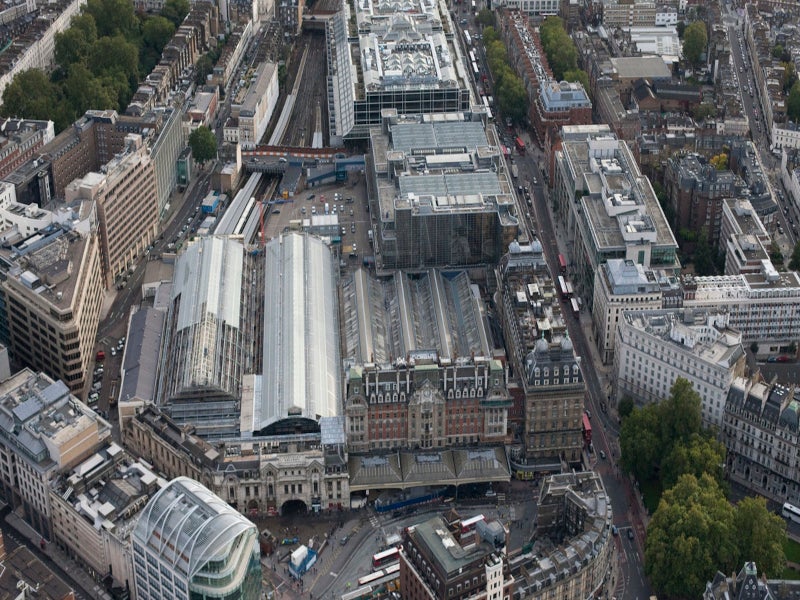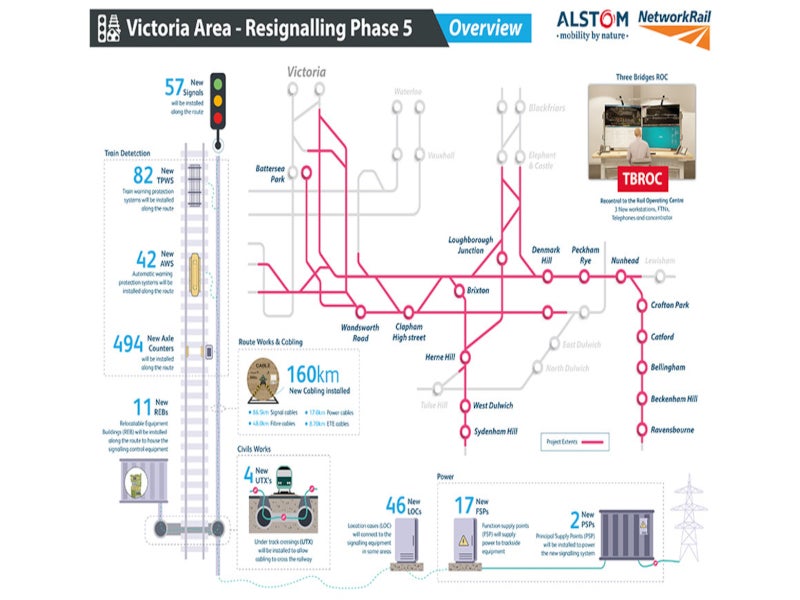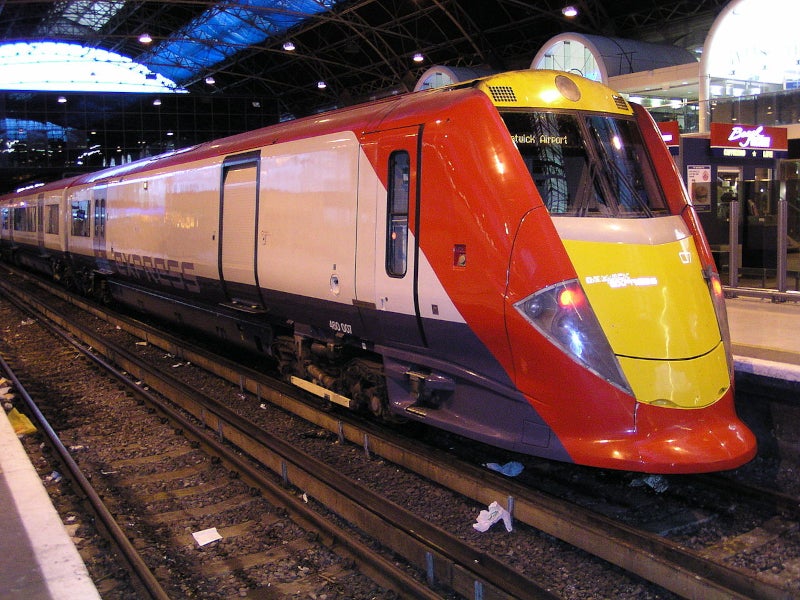Network Rail, a UK-based state-owned railway company, is modernising the existing track and signalling systems on the railway lines into London Victoria station, a major railway and underground station in London, UK.
The London Victoria re-signalling project is a four-year modernisation project being carried out in phases to improve the reliability of the network and to facilitate the timely movement of more passengers and freight trains across the South London area.
It is part of the signalling contract awarded to Alstom under the Major Signalling Framework Agreement for Network Rail’s Southern Region in 2020.
The first phase of work (Phase 3) was initiated between London Victoria, Clapham Junction, and Balham, and the West London Lines from Clapham to Shepherds Bush in 2021.
Phase 4 upgrade work between Tulse Hill, Peckham Rye, and Crystal Palace began in 2022 and is expected to continue until 2024. Phase 5 work will be done between Battersea (Stewarts Lane), Herne Hill, Nunhead, and Ravensbourne between 2023 and 2025.
Phase 3 London Victoria re-signalling project detail
Phase 3 of the London Victoria re-signalling project will involve an investment of £160m ($194.4m) in signalling, track, civils, power systems, and telecommunications. A total of 93 new modern LED signals, 17 signal gantries, and three new power systems for the signalling and points heating equipment will be installed in this phase.
The project will involve the renewal of the track at eight key junctions and 50 points to increase track reliability and reduce disruption. All signalling equipment in the Clapham and Balham areas, and lines into London Victoria, will be replaced.
The signalling control for the area will be relocated from Victoria Area Signalling Centre at Clapham junction, to Network Rail’s state-of-the-art Three Bridges Rail Operating Centre (TBROC) in Three Bridges, West Sussex.
TBROC will be equipped with computer-based interlocking equipment and a workstation. It will be installed with automatic route setting and will be compatible with traffic management.
Phase 4 London Victoria re-signalling project detail
Alstom received a £5m ($6.48m) signalling renewal design contract for Phase 4 development of the re-signalling project in October 2020, followed by a £37m ($51.48m) contract for Phase 4 development in March 2021.
Phase 4 work will replace almost 100 signalling equivalent units to create a more reliable service for Southeast London passengers. The key signalling equipment, with digital-ready technology, will be installed closer to access points to provide a safer environment for workers.
Alstom’s SmartIO object controller with Smartlock interlockings will be installed to mitigate obsolescence risks associated with legacy systems. It will provide a modern fibre-based digital network interface to the UK signalling systems, which will increase its reliability, performance, and functionality.
Alstom’s latest generation modular control system (MCS) Infinity remote signalling control will connect the lineside railway to TBROC to enable remote signalling control and automatic route setting.
Phase 5 London Victoria re-signalling project detail
Network Rail awarded a £69m ($90.39m) signalling contract to Alstom to deliver Phase 5 of the London Victoria re-signalling project in March 2022. The project will involve new signalling, infrastructure, and control technology.
The project will include the installation of 57 new signals, 82 new train protection warning system (TPWS) units, 42 new automatic warning protection systems, 494 new axle counters, and 11 new relocatable equipment buildings along the route.
TBROC will control 302 new signal equivalent units (SEUs), along with the new axle counters and TPWS units linked by 86,500m of signalling cable.
A total of 46 new location cases will connect to the signalling equipment in some areas. 17 new function supply points will be installed to power trackside equipment while two new principal supply points will power the new signalling systems.
The phase will also include the installation of 160km of new cabling and four under-track crossings to allow cabling to cross the railway.
The updated technology will improve the service reliability of the network, and will particularly benefit passenger and freight services between Battersea, Brixton, Herne Hill, and the Catford loop. It will provide more reliable, cost-effective, and easier-to-maintain systems, with improved efficiencies.









